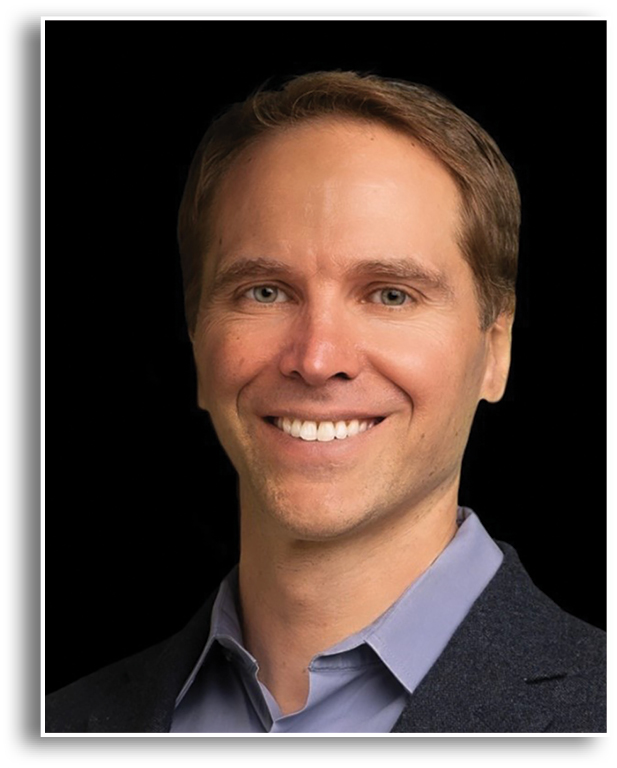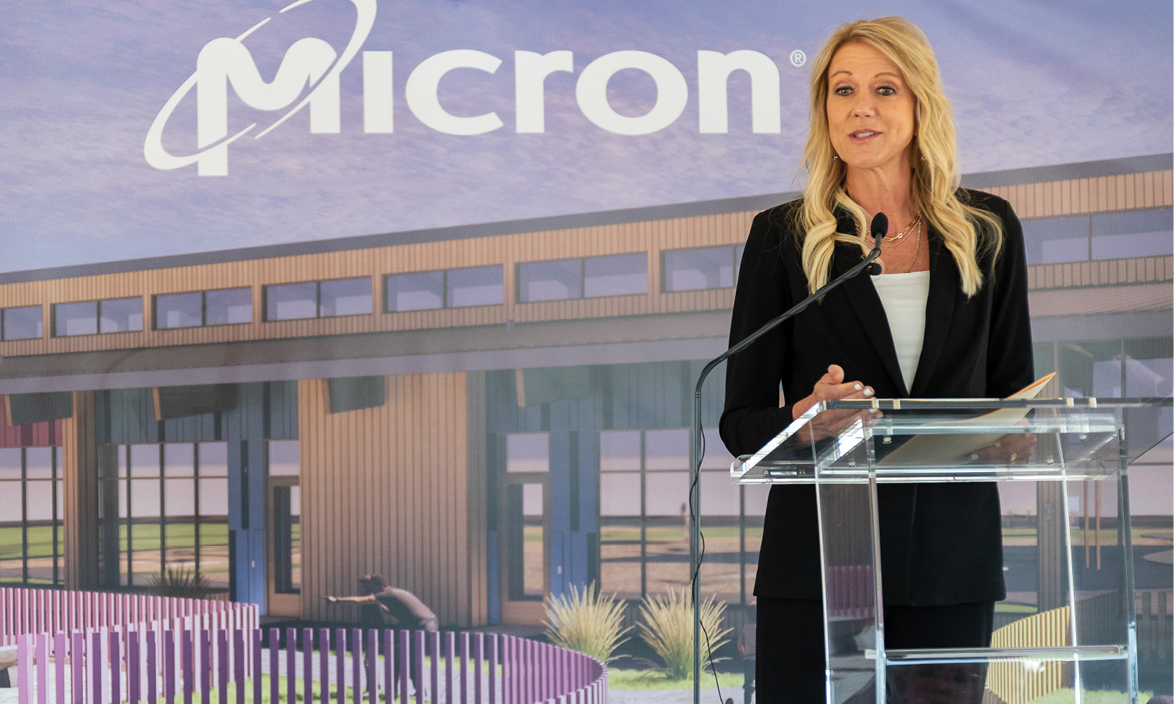How much is a trillion? To understand that number, step from numerals into the realm of time itself: It takes 32,000 years to tick off 1 trillion seconds.
OK, now do money.
The semiconductor industry is happy to oblige, as everything we touch requires ever more advanced chips to operate. In their case, the journey toward a trillion-dollar market is unfolding tens or hundreds of billions of dollars at a time, in places such as Poland, Germany, South Korea and India, where in June, just as India Prime Minister Narendra Modi made a state visit to the White House, Indian officials approved Micron’s planned $825 million chip assembly and test facility investment in Gujarat.
Since announcing the first funding opportunity from the CHIPS and Science Act, the U.S. Department of Commerce has received nearly 400 statements of interest from companies seeking to build semiconductor projects across 37 states contingent on getting a piece of the $52.7 billion in funds. The projects are coming from a host of multinationals including Micron, which followed up a $15 billion project announcement in its hometown of Boise, Idaho, last year with pledge of up to $100 billion over 20 years in New York that is projected to create more than 50,000 jobs (9,000 at Micron).
To gain perspective on these most mega of megaprojects, I conducted an email Q&A with Scott Gatzemeier, Micron’s corporate vice president of front end US expansion. He is responsible for Micron’s Boise and New York projects. His team is also responsible for meeting the goals of a Community Investment Framework in both locations to reflect the shared priorities Micron and its partners have identified to lead inclusive growth.
That’s where our conversation starts:
How did you develop the New York Community Investment Framework?
Scott Gatzemeier: We’ve looked at our New York investment as an opportunity to rewrite the playbook on how the public sector and the private sector can partner with early childhood, K-12 and higher education institutions, community organizations and government leaders to build a successful project that brings multiple benefits to a community.
 "Bringing world-class memory manufacturing to Boise and co-locating it with our industry-leading R&D facility will provide multiple strategic benefits for Micron’s innovation and U.S. technology leadership.”
"Bringing world-class memory manufacturing to Boise and co-locating it with our industry-leading R&D facility will provide multiple strategic benefits for Micron’s innovation and U.S. technology leadership.”
— Scott Gatzemeier, Corporate Vice President of Front End US Expansion, Micron Technology
The Community Investment Framework defines the shared values Micron and Empire State Development have identified as priorities for ensuring we build and prepare the workforce of the future. It defines our initial community and workforce commitments that will benefit not only Central New York but America’s manufacturing leadership. This is a historic $500 million investment focused on supporting workforce development, education, community assets and organizations, and affordable housing, as well as other initiatives that ensure the Central New York workforce will have the advanced skills needed to sustain leading-edge semiconductor manufacturing. Micron will invest $250 million in the Green CHIPS Community Investment Fund and an additional $250 million is expected to be invested, with $100 million from New York and $150 million from local, other state and national partners. The Community Engagement Committee was developed to ensure meaningful, ground-up discussion of Micron’s community investment strategy. We recently announced the members of the Committee — a diverse group of local stakeholders who can provide us with that on-the-ground perspective on how we make the greatest impact on not just our future workforce, but across the region as a whole.
Employer-supplied childcare has become a hot topic. How did this subject come to the fore for Micron?
Scott Gatzemeier: We’re committed to building a diverse workforce of the future that can support Micron’s leading-edge memory manufacturing at scale. We know that childcare can be a major obstacle to employment opportunities, so we know that helping to provide accessible and affordable high-quality childcare options is an essential part of attracting and retaining Micron’s talent.
Micron’s Childcare Center in Boise will support the broader Treasure Valley community, creating additional childcare capacity by serving Micron employees. The center will be located across from Micron’s corporate headquarters and future fab and will grant easy access for parents to their children, help to address barriers to workforce entry and ease the transition for Micron employees, especially mothers, returning to the workforce. To further address the needs of our employees and the fab’s construction workforce in Idaho, Micron will partner with IdahoSTARS and other childcare referral tools to identify shared resources that support high-quality, affordable childcare.

Micron Senior Vice President, Chief People Officer and President of the Micron Foundation April Arnzen spoke at the groundbreaking of a new childcare center in Boise in partnership with the local YMCA, part of the company’s $15 billion investment at its Boise complex.
Photo courtesy of Micron
We look forward to taking a similar approach in Central New York, where childcare will also be a key component of the efforts we undertake to build a diverse workforce of the future. We’ve announced a $500,000 investment in the YMCA of Central New York to bolster their childcare offerings, and we will identify more ways to make an impact in this space in Onondaga County.
Walk us through your decision-making processes for the Boise and New York investments.
Scott Gatzemeier: First, let me highlight that Micron’s investments in the U.S. were made possible by the CHIPS and Science Act and support from local, state and the federal government. Our choice of New York was the result of a rigorous and competitive site selection process. New York stood out because of the collaboration — from the local community level to the state and federal levels. The site in Clay has access to the power and water resources we’re looking for. The region offers a rich pool of diverse talent — including veterans and talented people from communities underrepresented in technology jobs — and the opportunities to partner with K-12 and higher education to further develop a robust workforce pipeline. There are opportunities to collaborate on R&D initiatives with others in the state, including The Albany NanoTech Complex and The U.S. Air Force Research Laboratory.
Boise is the home of our global headquarters and is the only leading-edge memory technology and design center in the U.S. This site represents a key location for Micron’s semiconductor technology innovation and the future of domestic leading-edge memory manufacturing. But this was also a very competitive selection process and we had to ensure that we could be competitive in the global market. Bringing world-class memory manufacturing to Boise and co-locating it with our industry-leading R&D facility will provide multiple strategic benefits for Micron’s innovation and U.S. technology leadership. This includes improving efficiency across both R&D and manufacturing, simplifying technology transfer and reducing time to market for cutting-edge products.
Among the issues we are hearing about during the buildout now underway are sufficient electrical power; workforce development; and supply chain/ecosystem constraints. Have Micron and its partners found solutions to these challenges?
Scott Gatzemeier: Looking at workforce development, the U.S. needs a talent pipeline that is trained for jobs in the semiconductor industry at scale. Meeting this need will require the development and cultivation of traditional and nontraditional pathways to the workforce. The workforce of the future will create demand for talented engineers and technicians with diverse skill sets to manage and operate state-of-the-art cleanroom facilities and develop advanced engineering solutions. We are committed to effective and creative workforce development solutions that expand the workforce and make these careers accessible to all, particularly individuals in underrepresented and rural communities.
Let’s start with the Chip Camps and Girls Going Tech events that we’re partnering with local schools to bring to different regions. These free camps give middle schoolers an opportunity to explore STEM and learn how it translates to different careers. Then take a step up to higher education — in the U.S., we’ve recently announced our Northeast and Northwest University Semiconductor Networks, which include a number of regional higher education institutions that will join together to drive research, modernize semiconductor curriculum and increase students’ opportunities for experiential learning, particularly those from underrepresented communities.
All of these efforts create a pipeline not just of future Micron employees, but people who can work for suppliers and other businesses that are going to support our operations. These really are the kinds of seeds that you have to plant now so over time the solutions are blossoming as they’re needed.
We frequently hear about the need for advanced manufacturing technicians with stackable credentials, not necessarily degrees.
Scott Gatzemeier: Historically, the collective focus of industry, government and universities has been on training advanced graduates for jobs in design and R&D roles in the industry. But new investments in manufacturing require technicians that can be trained with only an associate degree and hands-on experience.
Take the cleanroom technicians we’ll employ in New York and Idaho — that’s a job that you don’t need a master’s degree or a Ph.D. for. We have great partners in our local community colleges who are supporting our long-term plans, from modernizing their curricula to ensure they offer the skills needed to fill these roles to building a cleanroom training facility, like we will at Onondaga Community College, to giving students the hands-on training that enables them to hit the ground running the first day they step foot in our fab.
Micron is also leveraging Registered Apprenticeships, a proven industry-driven training model, to assist and propel underrepresented individuals to “work-and-learn” and provide a pathway to well-paying careers. Last fall, Micron launched the Registered Apprenticeship Program, which will help create a pipeline of candidates trained for jobs in the semiconductor industry. There are also trades apprenticeship programs that are rapidly expanding to fill the need for skilled construction. Long term, those programs create a well-stocked pool of tradespeople who stack up those credentials they’ll use to help keep operations running.
If we do the work now — which we are — we can build the programs that are going to graduate people with certifications and degrees they’ll use when we first launch and that are going to be a feeder as we continue to ramp up in the years to come.

